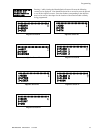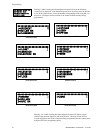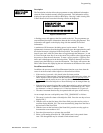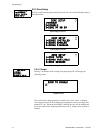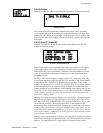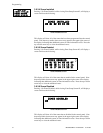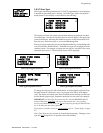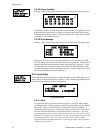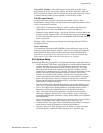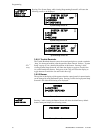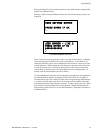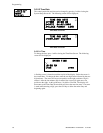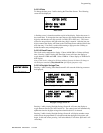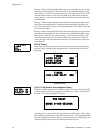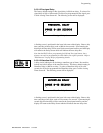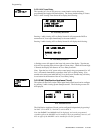
Programming
MS-9200UDLS PN 52750:E1 01/27/09 97
Note on SLC Troubles: If the FACP reports an open fault on an SLC Loop
programmed for Style 6, the trouble condition will latch at the FACP. When the
SLC Loop has been repaired, the Reset button must be pressed at the FACP (at least
2 minutes after the trouble has been repaired) to clear the SLC trouble.
3.6.4.2 Loop Protocol
Loop Protocol refers to the SLC loop mode of operation. Refer to "Wire
Requirements" on page 205 for wire specifications based upon SLC protocol. There
are two Loop Protocols available:
• CLIP (Classic Loop Interface Protocol) - which is used for the older legacy
addressable devices such as the M300 Series modules and detectors.
• LiteSpeed (factory default setting) - used for the 350 Series or newer addressable
devices for quicker response times. Note that the legacy devices can operate only
in CLIP mode while the newer devices are compatible with CLIP and LiteSpeed
modes of operation.
Pressing 2 while viewing the Loop Setup Screen will toggle between CLIP and
LiteSpeed Protocols.
Device Addressing
It is important to note that the MS-9200UDLS addressable device capacity is 99
detectors and 99 control/monitor modules. Newer devices can be set to addresses
higher than 99 but these addresses will not function with the MS-9200UDLS.
Note that It is permissible to mix old and new devices on the same loop but the
FACP must be set for CLIP mode when older devices are installed.
3.6.5 System Setup
System Setup allows the programmer to configure the following control panel features:
• Trouble Reminder: This feature, when enabled, provides an audible reminder that
an alarm or trouble still exists on the FACP after the control panel has been
silenced. The control panel piezo sounder will pulse once every 15 seconds
during an alarm and every two minutes during a trouble condition, after the
Alarm Silence or Acknowledge key is pressed. The piezo will continue to sound
at these rates until the alarm or trouble condition is cleared. If the trouble
condition is not cleared within 24 hours, the panel will reactivate the trouble
sounder and retransmit the trouble condition to the central station if connected.
• Banner: This option allows the user to change the top two lines of the LCD
display from the blank factory default readout to a user defined readout when the
control panel is in Normal condition.
• Time-Date: This feature allows the programmer to set the time, display format
(24 hr or 12 hr), date and daylight savings time feature into the FACP memory
• Timers: This option allows the programmer to set the PAS (Positive Alarm
Sequence) time delay, Pre-Signal time delay and Waterflow time delay.
• NACs: This feature allows the programmer to configure the control panel
Notification Appliance Circuits for a variety of options, such as circuit type,
silenceable/nonsilenceable, autosilence, coding, silence inhibit, zone assignment
and enable/disable.
• Relays: This option allows programming of two onboard relays for activation by
various control panel events, such as alarm, trouble, supervisory, etc.
• Canadian Option: This option allows the automatic programming of ionization
smoke detector sensitivity thresholds to Canadian specifications.
• Waterflow Silenceable: This option provides the ability to silence any output
circuit activated by a monitor module programmed as a waterflow type.



